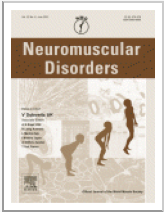 Duchenne muscular dystrophy is a rare genetic disorder with life-limiting pathology. Drisapersen induces exon 51 skipping, thereby producing a shorter but functional dystrophin protein. The longest available data are from an open-label extension study (PRO051-02) treating 12 boys with drisapersen (6 mg/kg/week subcutaneously). The median change (range) from baseline to week 177 in six-minute walking distance (6MWD) was 8 (-263, 163) metres.
Duchenne muscular dystrophy is a rare genetic disorder with life-limiting pathology. Drisapersen induces exon 51 skipping, thereby producing a shorter but functional dystrophin protein. The longest available data are from an open-label extension study (PRO051-02) treating 12 boys with drisapersen (6 mg/kg/week subcutaneously). The median change (range) from baseline to week 177 in six-minute walking distance (6MWD) was 8 (-263, 163) metres.
The current analysis aimed to put the results from PRO051-02 in the context of natural progression by comparing the functional trajectory of drisapersen-treated subjects to a matched natural history (NH) cohort, treated by standard of care. Subjects were matched individually by age and 6MWD, as the primary analysis, and by age and rise from floor (RFF), as sensitivity analysis. A total of 75 NH subjects were available for 6MWD analysis, of which matching was possible for 9 ambulant drisapersen-treated subjects. None of the 6 “stable” (baseline 6MWD ≥330 metres) drisapersen-treated subjects lost ambulation vs 4 out of 10 matched NH subjects over a comparable timeframe (~3.4 years), compared with 2 out of 3 ambulant “in decline” drisapersen-treated subjects vs all 6 matched NH subjects. A total of 79 NH subjects were available for RFF analysis. For continuous ambulatory subjects (N = 4), the RFF decline was more pronounced in the NH cohort than in the drisapersen-treated subjects.
In conclusion, a comparison of ambulant drisapersen-treated subjects with matched NH subjects showed a difference in functional trajectories over a timeframe of up to 3.4 years in favour of drisapersen.
>Read full text
